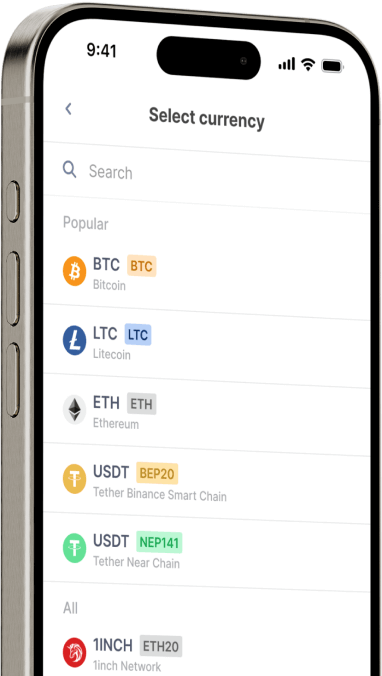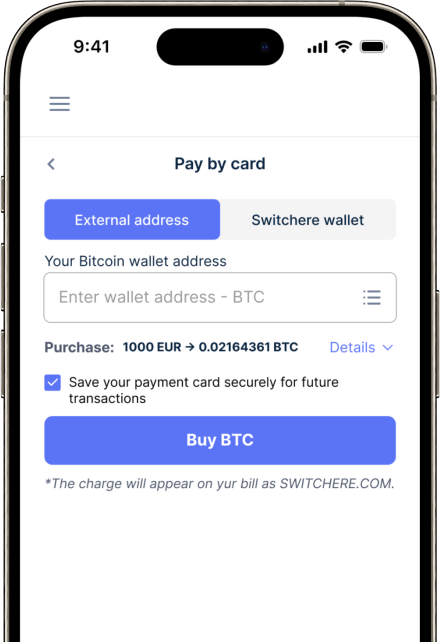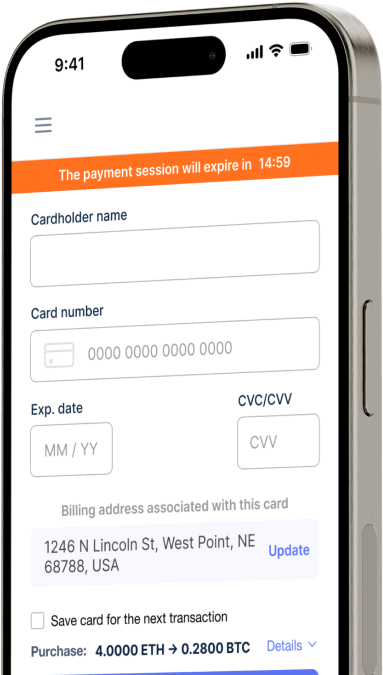Convertire
Azerbaijan Manat (AZN) in Chromia (CHR) istantaneamente
Acquistate facilmente Chromia (CHR) con Azerbaijan Manat (AZN) su Switchere e beneficiate di transazioni rapide e sicure.
Circa
Chromia (CHR)
Chromia (CHR) è una piattaforma blockchain relazionale progettata per abilitare una nuova generazione di applicazioni decentralizzate (dApp) affrontando le sfide di scalabilità, gestione dei dati ed esperienza degli sviluppatori prevalenti nelle precedenti infrastrutture blockchain. A differenza delle tradizionali piattaforme di smart contract che utilizzano una macchina virtuale, Chromia integra la sicurezza di una blockchain con la flessibilità e l'efficienza di un database relazionale. Questa architettura unica, basata sul framework Postchain, consente di gestire strutture di dati e query più complesse direttamente on-chain, rendendola un'infrastruttura Web3 altamente adatta per applicazioni ad alta intensità di dati come sistemi aziendali, social media e giochi avanzati.
Il cuore dell'innovazione di Chromia risiede nel suo linguaggio di programmazione personalizzato, Rell, progettato per essere altamente sicuro e facile da imparare per gli sviluppatori che hanno familiarità con SQL. Questa attenzione a un ambiente favorevole agli sviluppatori mira ad accelerare la creazione di dApp sofisticate. La rete opera su un meccanismo di consenso Byzantine Fault Tolerance (BFT), con le dApp che vengono eseguite sulle proprie sidechain dedicate, garantendo un throughput elevato e una bassa latenza. Il token di utilità nativo, CHR, è centrale nella tokenomics dell'ecosistema. Viene utilizzato dalle dApp per pagare le tariffe di hosting, messo in staking dai provider di nodi per garantire la sicurezza e funge da valuta standard all'interno dell'economia degli asset digitali di Chromia.
Acquistare altre 150+ criptovalute per Azerbaijan Manat (AZN)
Altre monete per Azerbaijan Manat (AZN)
-
AZN per ZRX
-
AZN per 1INCH
-
AZN per AAVE
-
AZN per ACH
-
AZN per ALGO
-
AZN per TLM
-
AZN per ANKR
-
AZN per APE
-
AZN per NFT
-
AZN per API3
-
AZN per APT
-
AZN per ARPA
-
AZN per AUDIO
-
AZN per AVAX
-
AZN per AVAX
-
AZN per AXS
-
AZN per BADGER
-
AZN per BAL
-
AZN per BNT
-
AZN per BAT
-
AZN per BNB
-
AZN per BSW
-
AZN per BSV
-
AZN per BLUR
-
AZN per BONE
-
AZN per CTSI
-
AZN per CELR
-
AZN per CELO
-
AZN per CEL
-
AZN per LINK
-
AZN per CHZ
-
AZN per CHR
-
AZN per C98
-
AZN per COMP
-
AZN per CFX
-
AZN per PEOPLE
-
AZN per CVX
-
AZN per ATOM
-
AZN per CTC
-
AZN per CRV
-
AZN per DAI
-
AZN per DASH
-
AZN per MANA
-
AZN per DENT
-
AZN per DGB
-
AZN per DYDX
-
AZN per XEC
-
AZN per EOS
-
AZN per ETC
-
AZN per ENS
-
AZN per ETHW
-
AZN per FET
-
AZN per FIL
-
AZN per FLOKI
-
AZN per GALA
-
AZN per GNO
-
AZN per ONE
-
AZN per HBAR
-
AZN per HOT
-
AZN per HOOK
-
AZN per ICX
-
AZN per ILV
-
AZN per IMX
-
AZN per INJ
-
AZN per ICP
-
AZN per IOST
-
AZN per IOTX
-
AZN per JASMY
-
AZN per JST
-
AZN per KAVA
-
AZN per KCS
-
AZN per KSM
-
AZN per KNC
-
AZN per LDO
-
AZN per LQTY
-
AZN per LPT
-
AZN per LOOKS
-
AZN per LRC
-
AZN per LUNA
-
AZN per MKR
-
AZN per MASK
-
AZN per EGLD
-
AZN per ALICE
-
AZN per NEAR
-
AZN per XEM
-
AZN per NEXO
-
AZN per NOT
-
AZN per NMR
-
AZN per OKB
-
AZN per OMG
-
AZN per ONT
-
AZN per EDU
-
AZN per OP
-
AZN per OGN
-
AZN per CAKE
-
AZN per PAXG
-
AZN per PENDLE
-
AZN per DOT
-
AZN per POL
-
AZN per QTUM
-
AZN per QNT
-
AZN per RDNT
-
AZN per XRD
-
AZN per RVN
-
AZN per REN
-
AZN per RSR
-
AZN per RLC
-
AZN per RPL
-
AZN per SFP
-
AZN per SHIB
-
AZN per SKL
-
AZN per SXP
-
AZN per STND
-
AZN per STG
-
AZN per XLM
-
AZN per GMT
-
AZN per STORJ
-
AZN per STMX
-
AZN per SUSHI
-
AZN per SNX
-
AZN per USDT (Polygon)
-
AZN per USDT (AVAC)
-
AZN per USDT (BEP20)
-
AZN per USDT (ERC20)
-
AZN per USDT (SPL)
-
AZN per USDT (NEP141)
-
AZN per USDT (FA2)
-
AZN per USDT (TRC20)
-
AZN per USDT (JETTON)
-
AZN per XTZ
-
AZN per GRT
-
AZN per SAND
-
AZN per TFUEL
-
AZN per THETA
-
AZN per RUNE
-
AZN per TON
-
AZN per TUSD (BEP20)
-
AZN per TUSD (TRC20)
-
AZN per TWT
-
AZN per UOS
-
AZN per UMA
-
AZN per UNI
-
AZN per USDC (Polygon)
-
AZN per USDC (SPL)
-
AZN per USDC (OP)
-
AZN per USDC (BEP20)
-
AZN per USDC (AVAC)
-
AZN per USDC (ARB)
-
AZN per USDC (ERC20)
-
AZN per VET
-
AZN per VRA
-
AZN per WAXP
-
AZN per WOO
-
AZN per WLD
-
AZN per WBTC
-
AZN per WMINIMA
-
AZN per XDC
-
AZN per YFI
-
AZN per YGG
-
AZN per ZIL
Come acquistare gli Chromia (CHR)
Domande frequenti
-
Qual è il metodo più comune per acquistare Chromia (CHR) con il Manat azero (AZN)?
Le coppie di trading dirette AZN/CHR sono rare. Il metodo più comune prevede un processo in due fasi: in primo luogo, utilizzare un exchange di criptovalute locale o una piattaforma P2P per acquistare un asset digitale importante come USDT o BTC con AZN tramite un bonifico bancario azero. Successivamente, trasferire tale asset su un exchange globale che elenca CHR e negoziarlo sul relativo libro ordini. Questo processo funge da affidabile rampa di accesso fiat all'ecosistema Chromia.
-
Quale conformità KYC/AML è tipicamente richiesta quando si utilizza l'AZN come rampa di accesso fiat?
Quando si acquista un qualsiasi asset digitale con il Manat azero su una piattaforma regolamentata, è necessario completare un processo di verifica Know Your Customer (KYC) e Anti-Money Laundering (AML). Questo di solito comporta la presentazione di un documento d'identità rilasciato dal governo (ad es. carta d'identità nazionale o passaporto) e talvolta una prova di indirizzo. Si tratta di una misura di sicurezza standard per il trading sicuro e aiuta a prevenire attività illecite sulla blockchain.
-
Quali sono i principali casi d'uso del token Chromia (CHR) all'interno del suo ecosistema?
Il token CHR è parte integrante della piattaforma Chromia. Le sue utilità principali includono il pagamento delle commissioni di hosting delle dApp, lo staking da parte dei fornitori per proteggere la rete e l'uso come valuta standard all'interno delle dApp costruite su Chromia. Questo è particolarmente rilevante per i giochi su blockchain e i progetti che utilizzano Chromia Originals, il loro standard NFT unico. In sostanza, CHR alimenta l'attività economica attraverso la sua rete di blockchain relazionale.
-
Cos'è la blockchain relazionale di Chromia e perché è importante per lo sviluppo di dApp?
Chromia utilizza un'architettura unica chiamata blockchain relazionale, che modella i dati in modo simile a un database relazionale tradizionale. Ciò è possibile grazie al suo framework Postchain e al linguaggio di programmazione Rell, progettato su misura. Per gli sviluppatori, questo abbassa significativamente la barriera all'ingresso per la creazione di applicazioni decentralizzate (dApp) complesse, specialmente nei giochi su blockchain e nelle piattaforme NFT, poiché consente una gestione e un'interrogazione dei dati più efficienti rispetto ai modelli blockchain tipici.
-
Come posso conservare in modo sicuro i token Chromia (CHR) dopo averli acquistati?
Per l'archiviazione sicura del tuo asset digitale CHR, si consiglia vivamente di trasferirli dall'exchange di criptovalute a un portafoglio digitale personale in cui controlli le chiavi private. Poiché CHR è un token ERC-20, è compatibile con qualsiasi portafoglio che supporti Ethereum. Le opzioni includono portafogli hardware (come Ledger o Trezor) per la massima sicurezza o portafogli software affidabili (come MetaMask o Trust Wallet). Non condividere mai le tue chiavi private o la frase seme.
-
Esistono piattaforme con elevata liquidità per negoziare CHR dopo l'acquisto iniziale con AZN?
Sì, una volta convertiti i tuoi AZN in una criptovaluta principale come USDT, diversi exchange di criptovalute globali di primo livello offrono coppie di trading CHR con elevata liquidità e un volume di scambi significativo. Cerca coppie CHR/USDT o CHR/BTC su piattaforme consolidate. L'elevata liquidità è fondamentale in quanto garantisce di poter eseguire le tue operazioni rapidamente e a un prezzo vicino a quello di mercato, riducendo al minimo lo slippage per la tua transazione blockchain.




